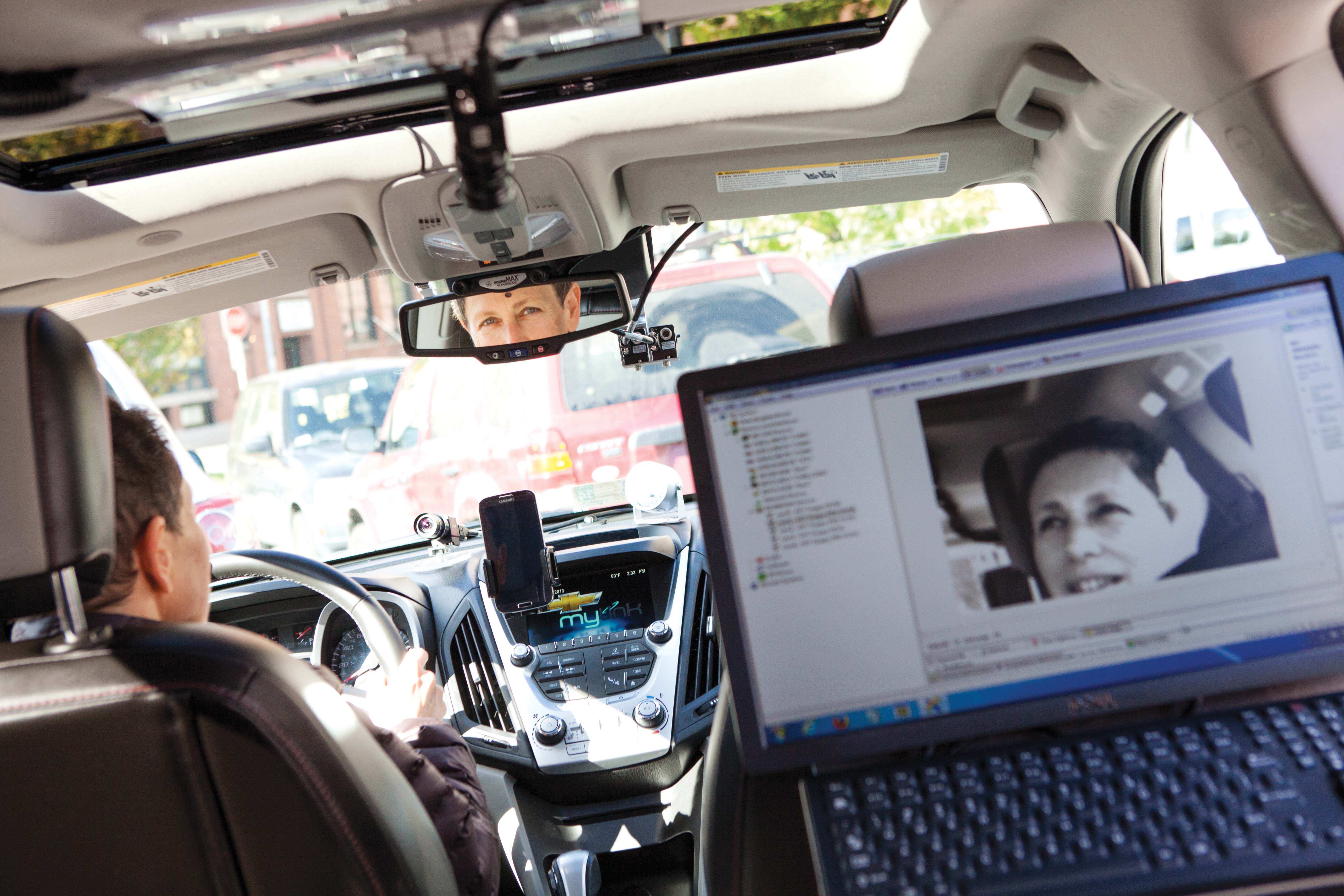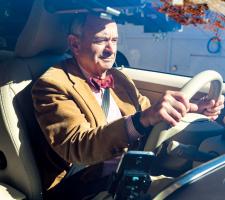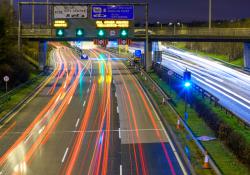
Advanced driver assistance systems (ADAS) are evolving at a rapid pace – but drivers’ ability to cope with them is not and at some point the mismatch must be addressed.
Probably the biggest challenge the transportation industry has ever faced.” That is how Dr Bryan Reimer of
“Technically things are progressing and individually every driver aid may do its job faultlessly in testing. But put them all together, add in a driver and real life environmental conditions, and problems may start to become evident.”
There are already examples of mode confusion where drivers forget if a particular function, such as cruise control, has been engaged or while programming their satellite navigation system, they pass a red light. This effect can already be seen in distracted driving accidents, prompting the US National Highway Traffic Safety Administration (NHTSA) to issue guidelines. These recommend that devices are designed to allow the driver to complete the task in a series of glances away from the roadway of two seconds or less. Furthermore, the cumulative ‘eyes off road time’ to complete the task should be 12 seconds or less.
Complying with such guidelines will not be easy and while many have championed voice activation as a ‘hands-free, eyes-free’ solution, Dr Reimer’s work shows this isn’t the case. He found that programing a new destination into a satellite navigation system using voice commands took around two minutes – a long time when driving - and although the individual glance times were within the two second limit, the total eyes off road time was more than 30 seconds. By removing some of the verbose vocal confirmations in an “experienced mode”, task time is reduced but the total eyes off road time was almost unchanged, so the proportion of the time the driver was not looking at the road was increased.
Assessing information
“Humans are very visual and social beings so we can often assess information faster when it is presented visually and our social etiquette is to look at people when they are talking to us. For these reasons it is very difficult for a driver not to be visually drawn to a voice enabled device – especially if it is accompanied by graphical information or includes visual-manual selection subcomponents. However, compared to many purely visual-manual interfaces, voice enabled devices offer a host of advantages and in many instances need to be encouraged as a less demanding method of interacting with a vehicle system.”Drivers can choose when to carry out tasks such as programing satellite navigation but they will have no control over when they receive warnings from C-ITS or a lane departure warning system, speed to green notifications, or when the automatic braking kicks in..., so the potential for confusion is compounded.
“We must take a holistic view of vehicles 10 to 15 years out and get a handle on the interrelationship between all of the cognitive and visual demands onboard systems will place on the driver and the support that automation may provide to alleviate workload.
But at the moment, systems are often tested individually and we don’t even have a good way of measuring the level of overall workload these systems will place on drivers trying to navigate their way down the road,” says Dr Reimer.
“For instance, when humans are in control and we attend to something inside the vehicle, we often compensate for the demand by slowing down or not changing lanes. That’s not necessarily the case with automated systems. Approaching an intersection, the driver may get a collision warning or a lane-keeping alert, the satellite navigation could be telling them which way to turn, while the speed-to-green is informing them how fast they should travel to clear the lights.”
This leads him to predict that without a fundamental understanding of how drivers will react to these systems, designers will inadvertently make vehicles that are essentially ‘driver unfriendly’ and exacerbate an already difficult situation.
“Unless a vehicle is fully autonomous and can cope with every circumstance, the driver can be required to provide input. What we see now is creeping automation with more and more systems taking away functions the driver used to do, so the driver will increasingly become disengaged from what’s happening around them - they won’t remain as focussed and their minds will wander. Then, when the driver is required to provide input, they may not be in a position to take the correct action in the time available,” he says.
If driver input could be required, the challenge will be to keep them focussed on the road - or at least in a position where they can refocus on the road at very short notice if alerted to do so by the on-board systems. But even here Dr Reimer sees potential problems: “Carry-ons [mobile phones, MP3 players, computer tablets, magazines and the like] are one of the many unpredictable factors here. Audible driver alert systems can be rendered useless by drivers using earphones to listen to music on their MP3 players.
Those looking at their mobile phones or tablets may not see lights flashing on the dashboard.”
While it might appear counter-intuitive, Dr Reimer’s solution could involve bigger in-vehicle screens. “If we can get drivers using in-vehicle screens rather than their phones and tablets, we can still alert them when their input is needed.” He cites reading the newspaper in an automated driving situation as a good example: “If we could project the newspaper onto the windscreen then we could also turn it off if the driver needs to pay attention to the road.”
Roadside infrastructure may play a big part - for instance triggering a driver alert warning when there is an intersection or level crossing, narrow bridge or other obstacle ahead which may require human input for safe navigation.
Practical reality
However, he predicts such problems will be seen on the roads long before a fully autonomous vehicle becomes a practical reality in all situations (which he does not expect in the near future). “If, for instance, Mercedes’ lane keeping system influences the steering while GM’s sounds a buzzer and some other manufacturer’s flashes lights on the dashboard, how is any driver supposed to know what they need to do when they travel in a rental, borrowed, or otherwise unfamiliar car?”
In an effort to counter such outcomes, he is trying to set up a consortium of vehicle manufacturers to begin developing some common understanding of how drivers are actually utilising advanced vehicle technologies. In addition, he believes it may be to everyone’s advantage (both drivers and manufacturers) to expect and facilitate drivers having some education before taking delivery of a new car bristling with automated functions.
Indeed Dr Reimer is predicting a new age of ‘inexperienced drivers’. “With the vehicle doing so much itself, drivers may become unaccustomed to making the everyday decisions and manoeuvres that are part and parcel of what has previously been a normal part of driving a car. This driving experience, built up over many years, will be a distant memory when near-future drivers are required to take over control. In these situations, drivers may be less likely to quickly and accurately make the correct decision or manoeuvre.”
Two-stage solution
To overcome such challenges he advocates a two-stage approach, starting with vehicle manufacturers developing industry standards to ensure that at least some core driver assistance systems have common features, functions and warnings across the globe. There will also be a need to inform drivers what these systems do, when they should be used or could become active, the sound, feel or look of any warning and (where applicable) how to turn them on and off. The second, and far more difficult, task is to devise reliable methods to measure and understand the effect these systems have on drivers in terms of workload and confusion.“The sheer scale and scope of this task may be far bigger than any one vehicle manufacturer or supplier can undertake - and anyway it wouldn’t be advantageous for individual manufacturers to devise mutually exclusive system controls and tests. Not only must we devise testing methodologies that allow us to better evaluate the effect of technologies on the driver, the interaction of all driver assistance systems must be tested together under real life on-road conditions and not just in isolation in a simulator or controlled experiment,” Dr Reimer says.
“We need to educate designers about how drivers are coping with these onboard systems while also making motorists more aware of what the manufacturers are trying to achieve.”
Such a regime could increase new system development costs in the near term and reduce the rate of introductions – though there may be longer term savings and more successful introductions as a result. It also needs to be kept in mind that while the latest technology may be easily understood by millennials, it may not be as easy for the increasing numbers of older drivers spawned by ageing populations around the world. Ongoing education about new technologies will be particularly important for this growing proportion of the population.
So, is this ‘the biggest challenge the transportation industry has ever faced’? Quite possibly - and potentially by some margin.










